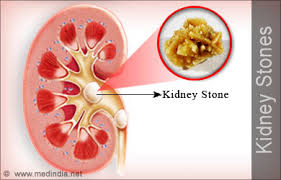Kidney stones season is here. But you can avoid it – and trust me, you want to.
The weather is hot, and with air conditioning the indoors are drier – which means you will perspire more, and if you don’t keep up with drinking, you are at risk to develop kidney stones. Even if you stay indoors- the decreased humidity from air conditioning will increase loss of body water- meaning you will become volume depleted (dehydrated).
About 9% of all US adults will develop kidney stones- and that number has almost doubled, which may be secondary to warmer summers, increased consumption of soda, and obesity. If you get one kidney stone, the chances of getting more are high.
What It Feels Like – The Worst Pain Ever
Women who have given birth say this hurts more
Most patients have severe colicky pain and go to the emergency room where they are diagnosed
It can mimic a heart attack or appendicitis
What to Prevent It
No matter how much fluid you think you are drinking- drink more. Your body is use to what you drink for the winter – it is time to step it up. 3-4 liters a day!
Avoid soda – soda consumption is a risk factor for most kidney stones. Lightly carbonated water is ok.
Most kidney stones are made of calcium oxalate, so some people are told to limit oxalate rich foods such as spinach, rhubarb, beets, chard, and increase other foods. Other stone types will have different recommendations.
Reduce the acidity in urine – drink more homemade lemonade and don’t sweeten it.
Decrease animal proteins to 12 ounces per day
DASH and Mediterranean diet works well for people who suffer from kidney stones
If you get kidney stones:
You will go to the ER.
Once the stone has passed – you will hear it plink in the toilet – fish it out and contact a urologist to send it off to see what it is made of. You want to know how your diet might affect further stone formation.

